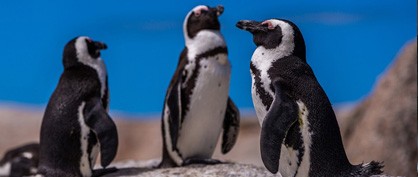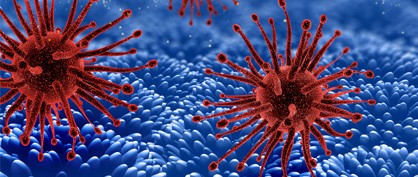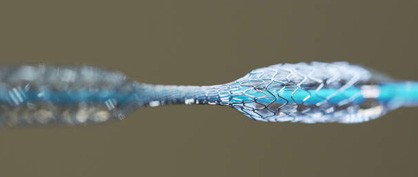
Amazing Science Facts
Discover new amazing science facts every month in our latest issue of Lab Reporter.
April

Mutant Chernobyl Wolves Develop Anti-Cancer Traits 35 Years Post-Nuclear Disaster
Since the Chernobyl nuclear disaster in 1986, the Chernobyl Exclusion Zone (CEZ) has been an intriguing site for scientific study. Despite the radiation exposure, wildlife like gray wolves have not only survived but thrived in this environment. Cara Love, an evolutionary biologist from Princeton University, ventured into the CEZ in 2014 to study how these wolves cope with cancer-causing radiation. Using specialized GPS collars equipped with radiation dosimeters, Love discovered that Chernobyl wolves are exposed to radiation levels far exceeding safety limits. Surprisingly, these wolves exhibit altered immune systems resembling those of cancer patients undergoing radiation treatment. Even more intriguing, Love identified specific regions of the wolf genome that appear to confer resilience to increased cancer risk, offering potential insights into cancer treatment. However, ongoing conflicts in the region and the COVID-19 pandemic have hindered further research efforts. Despite the challenges, Love remains committed to her work, presenting her findings at the Annual Meeting of the Society of Integrative and Comparative Biology in January 2024. Perhaps these findings will help us in the fight against cancer in the future.

Penguins: Masters of Microsleeping
Did you know that penguins, particularly chinstrap penguins, are experts at microsleeping? These adorable creatures can doze off more than 10,000 times a day, with each sleep session lasting just a few seconds. This unique behavior allows them to accumulate around 11 hours of sleep daily and helps them stay alert while protecting their eggs and chicks. Although the exact benefits of microsleeping for penguins are still being studied, it is believed to serve restorative functions. The ability to microsleep is a remarkable adaptation to their challenging environment. So, the next time you catch yourself briefly nodding off, remember that penguins have already perfected the art.
March

Scientists Discover New Virus-Like Entities, Obelisks, in Human Gut and Mouth Bacteria
Researchers from Stanford University have made an intriguing discovery in the world of microbiology. They have identified a new type of virus-like entity called "obelisks" within bacteria residing in the human gut and mouth. These obelisks possess RNA-based genomes, similar to traditional viruses, but they differ in their structure and behavior.
What makes obelisks particularly fascinating is their prevalence across different geographical regions. Scientists have found obelisk sequences in samples collected from various parts of the world, suggesting that they are not limited to a specific location or population. However, the exact role and impact of obelisks on human health are still unknown.
While traditional viruses are known to infect host cells and hijack their machinery to replicate, obelisks seem to have a different relationship with their bacterial hosts. Researchers speculate that obelisks may influence the genetic activity of their bacterial hosts, potentially altering their behavior or functioning. Understanding these interactions could provide valuable insights into the complex dynamics between viruses, bacteria, and human health.
It is important to note that obelisks are distinct from both viruses and viroids, another type of virus-like entity. Viroids are smaller and simpler in structure, consisting only of RNA molecules without any protein coat. Obelisks, on the other hand, have a more complex structure and are larger in size. This discovery highlights the vast diversity and complexity of the viral world, prompting further exploration and understanding of these entities.
The origins and evolutionary history of obelisks and viroids are still a subject of ongoing research. Scientists are keen to unravel the mechanisms behind their emergence, as well as their potential impact on the microbial communities within our bodies. By studying obelisks and other viral entities, researchers aim to gain a deeper understanding of the intricate interplay between viruses, bacteria, and human health.
In summary, researchers at Stanford University have uncovered a new type of virus-like entity called "obelisks" within bacteria found in the human gut and mouth. These obelisks possess RNA-based genomes and are prevalent worldwide. While their exact role and impact on human health remain unclear, their discovery sheds light on the diverse and complex nature of viruses and their interactions with bacterial hosts. Further research is needed to fully understand the significance of obelisks and their implications for human health.

Why Do Flying Insects Gather at Artificial Light?
When we walk at night and look at the streetlights, we can see dozens of insects flying around the light. We have always thought that insects are attracted to artificial light, but is this really the case?
To try to clarify this mystery, a study was carried out at Imperial College London, working with different species of moths, butterflies, dragonflies and fruit flies, both under laboratory conditions and in a natural environment (the Monteverde Biological Station, Costa Rica).
Now, researchers have proven that with natural light insects maintain a stable flight path oriented towards the sky. However, with artificial light, insects show "a dorsal response", that is, they divert their flight path, leaving their back facing the light. However, the insects try to correct the flight, which causes them to circle around the light source. But why do they react in this way to artificial light? The answer is curious and it turns out that insects need to know where the sky is in order to fly, so as to counteract gravity. However, with artificial light they get confused and think that this light source is the sky, leaning towards it and giving rise to the "dorsal response" mentioned above.
It should be noted, however, that these studies are not conclusive and researchers still need to analyse more details, such as the long-range effects of artificial light. That said, what does seem to be clear is that the excess of night-time light in cities is currently affecting the behaviour patterns of insects faster than the ability of insects to adapt to their “new environment”.
February

Revolutionizing Energy Storage: Sustainable Solutions from Mining Sites
In a transformative shift towards sustainability, startups Gravitricity and Green Gravity are reshaping energy storage by repurposing mining sites for eco-friendly solutions.
Edinburgh-based Gravitricity's GraviStore system utilizes underground shafts to lift weights, discharging power on release. A collaboration with ABB (a technology leader in electrification and automation) emphasizes sustainable hoisting solutions, with projects globally targeting a 20MWh storage capacity.
In Australia, Green Gravity partners with Wollongong Resources to explore eight potential sites in the Illawarra region, envisioning up to 100MWh of gravity-based storage. Repurposing mine shafts showcases their commitment to sustainable energy, supporting the transition from coal mining operations.
These initiatives mark a significant leap in sustainable energy solutions, turning unconventional sites into eco-friendly power hubs.

Artificial Photosynthesis
Artificial photosynthesis is a process that aims to replicate the natural process of photosynthesis, where plants and other organisms convert sunlight, water, and carbon dioxide into energy-rich molecules. This technology holds the potential to produce sustainable and renewable fuels using abundant resources such as sunlight and water.
Research in artificial photosynthesis focuses on developing artificial systems that can efficiently capture and convert solar energy into chemical energy, which can be stored and used as a clean fuel source. By mimicking the complex processes of natural photosynthesis, scientists aim to create artificial systems that can produce hydrogen, methane, or other energy-dense molecules from sunlight and water.
The development of artificial photosynthesis technology has the potential to address the global energy challenge by providing a renewable and environmentally friendly source of fuel. It could play a crucial role in reducing carbon emissions and mitigating the impact of climate change by offering a sustainable alternative to fossil fuels.
January

Mastering Flexibility with Nitinol - The Shape-Memory Wonder
Nitinol, a cutting-edge shape-memory alloy crafted from a blend of nickel and titanium, stands as a marvel in material science. Its defining characteristic lies in its ability to revert to a pre-set shape when exposed to heat, showcasing unparalleled shape-memory capabilities. This unique quality, coupled with superelasticity, makes Nitinol an invaluable material with a myriad of applications.
In the medical realm, Nitinol plays a pivotal role in the creation of devices such as stents and guidewires. Its adaptability to different shapes and sizes makes it an ideal choice for medical instruments that require precision and flexibility. The alloy's capacity to withstand deformation and return to its original form ensures optimal functionality in intricate medical procedures.
Beyond healthcare, Nitinol finds itself at the heart of various technological advancements. In robotics, it serves as a dynamic material for actuators, allowing for intricate movements and adjustments. The alloy's resilience extends to everyday applications, with Nitinol making its mark in eyeglass frames, showcasing its versatility in enhancing daily comfort and usability.
As an engineering marvel, Nitinol's unique combination of shape-memory and superelasticity positions it as a frontrunner in materials science. Its applications continue to evolve, promising a future where flexibility and adaptability are not just desired but mastered.

Unveiling the Cosmic Enigma: Recent Discoveries about the Amaterasu Particle Ignite Scientific Excitement
The recent discovery of the Amaterasu particle has been described as an unprecedented unveiling of a cosmic enigma. Its unique properties and behavior continue to puzzle scientists, pushing the boundaries of our knowledge.
Here are some of the latest findings:
- Detection from Empty Space: The Amaterasu particle, one of the highest-energy cosmic rays ever detected, has been found to originate from an apparently empty region of space. This discovery challenges our understanding of the sources and mechanisms behind cosmic rays.
- Similar Energy Levels to the "Oh My God!" Particle: The Amaterasu particle has been found to possess energy levels comparable to the most energetic cosmic ray ever discovered, known as the "Oh My God!" particle. This places the Amaterasu particle in a league of its own in terms of energy.
- Potential for a New Branch of High-Energy Astrophysics: Researchers believe that the study of the Amaterasu particle could lead to the creation of an entirely new branch of high-energy astrophysics. Its detection opens up possibilities for exploring the mysteries of the universe in ways we have not yet imagined.
- Origin and Questions: The origin of the Amaterasu particle remains unknown, leaving scientists with numerous questions. Further research and analysis are needed to unravel its mysteries and gain a deeper understanding of its nature.
These recent discoveries highlight the significance of the Amaterasu particle in advancing our knowledge of particle physics and astrophysics. As scientists continue to investigate and analyze this elusive particle, we can expect further breakthroughs that will shape our understanding of the universe.

